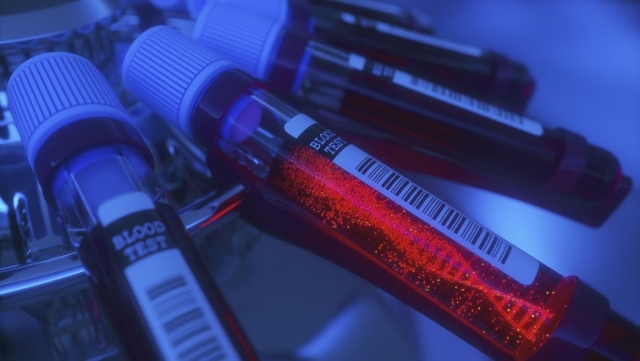An Israeli breakthrough in the world of medicine could change the way cancer is treated. Researchers at the Hebrew University succeeded in developing tiny 'drug carriers' that can travel through the bloodstream to the cancerous tumor and release the drug locally, without further harming the patient or spreading the medicine randomly throughout the body.
An international team of researchers led by Professor Ofra Benny, Ph.D. student Arnon Fluksman from the School of Pharmacy in the Faculty of Medicine at the Hebrew University, and Dr. Borja Sepulveda and his team from the Instituto de Microelectronica de Barcelona, succeeded in developing nanometric particles that are capable of delivering medicine directly to the tumor site, controlling the rate of its release and even heating the tiny particles. All this through a revolutionary innovation; coating the drug-carrying particles with a thin layer of iron, so that the particles react to external energy sources such as a magnetic field and infrared light.
Hebrew University Researchers Develop Cancer Nanotherapies Effective in Tumor Eradication#Neurofibromnatosis type2 #NF2 #NF2SWN #ENDNF2https://t.co/tmXz5mhshi
— NF2 BioSolutions UK & Europe (@nf2biosolution1) February 11, 2023
The ability to directly target a tumor is one of the biggest challenges in modern medicine. Scientists and medical teams have been trying for a long time to develop effective methods of drug delivery to improve the quality of care. "For a decade we have been conducting multidisciplinary research that combines materials engineering in the field of pharmaceuticals with engineering in a biological context, and are developing tools aimed at providing better treatments to cancer patients," explains Prof. Benny, head of the Fraunhofer Project Center for Drug Discovery and Delivery and Hebrew Univeristy's Laboratory for Nanomedicine and Tumor Microenvironment.
"A lot of our efforts are focused on developing methods that allow drugs to be much more targeted, especially against cancerous tumors," Benny continued. "One of our goals is to take drugs and optimize them so that they harm the tumor but not the rest of the body. If we make them reach the right place and work only there, we will reduce the exposure of other tissues to potentially harmful medicine. That's why our effort is focused on efficiently transporting the drugs to the site of the disease even when the tumors are located in areas of the body that are difficult to reach during surgery."
For initial testing conducted on animals, the researchers chose the chemotherapy drug paclitaxel, which works on breast cancer. A human breast cancer tumor was "induced" in a mouse. The researchers injected the drug-carrying particles, wrapped in a thin layer of iron, into the bloodstream of the mouse. Using a magnet placed in the area of the tumor, they aimed the particles at the cancerous tumor: when the particles passed through the bloodstream, they stopped in the area of the magnetic field.
Congratulations to Prof. Ofra Benny from our school for receiving the prestigious ERC-POC grant. The project is focused on the development of a novel platform for drug delivery in cancer.
— Pharmacy HUJI (@PharmacyHUJI) January 25, 2023
“An injectable and programmable drug-eluting embolic device”@Hujimed @HebrewU pic.twitter.com/cLAHjGIxg2
Like all things in medicine, further testing is needed to fully determine the impact of the new method being developed, however, the researchers seem extremely optimistic about their discovery.


